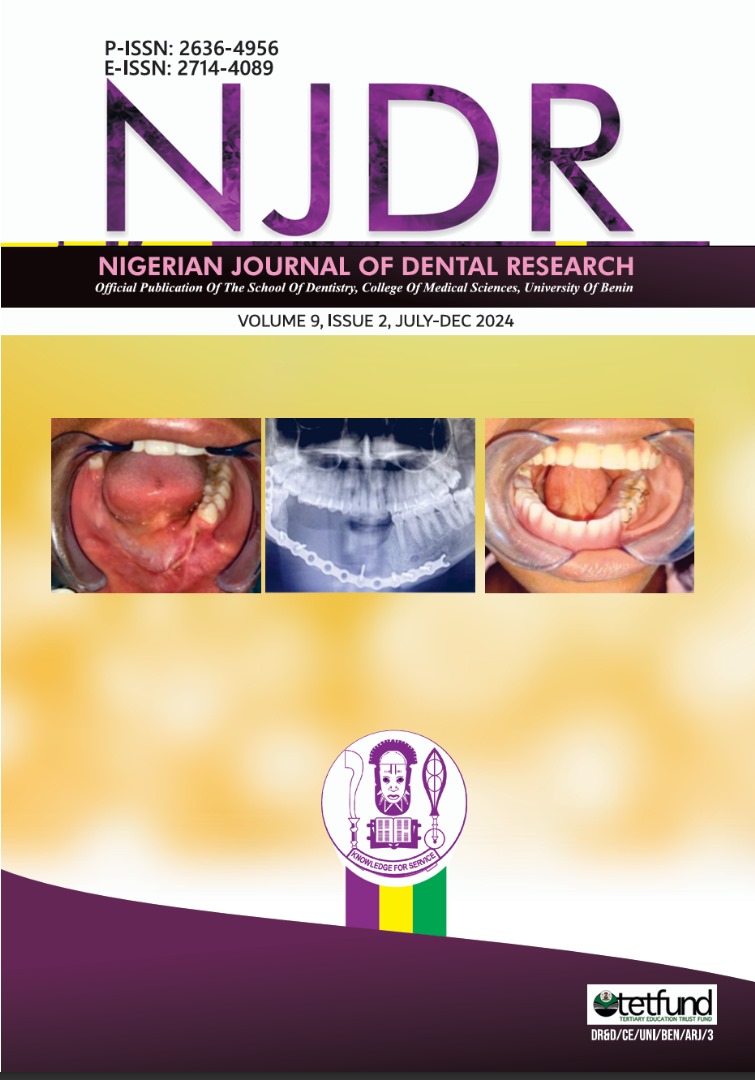Effect of Denture on Oral Microbiome Diversity of Denture-Wearing Older Adult
Denture effect on oral microbiome diversity
Keywords:
Denture, microbiome,, elderly, diversityAbstract
Background: Dentures remain a treatment option for tooth
replacement, however, their role in defining the oral
microbiome is still elusive.
Objective: To evaluate the effect of the insertion of dentures
on oral microbiomial profile using metagenomics.
Methods: Baseline denture sonicate was obtained from the
denture before insertion, supragingival plaque was collected
before and after denture insertion. Metagenomic DNA
extraction and next-generation sequencing on the Illumina
Miseq platform were all done using standard protocols.
Structural composition analysis was done using Quantitative
Insights into Microbial Ecology (QIIME).
Results: A total of 9 respondents, five males (55.6%) and four
elderly females (44.4%) with a mean age of 69.89±3.79
participated in this study. The five most common species
found in the dental plaque before the insertion of dentures
were Stenotrophomonas (26.06%), Capnocytophaga (9.11%),
Streptococcus (3.24%), Unknown (10.58%) and Haemophilus
Parainfluenza (8.29%). After insertion and use of dentures for
6 months, the bacteria identified in the dental plaque were
Stenotrophomonas which increased in quantity from 26.06.%
to 40.22%. The top five species found on the same denture
after insertion were Pseudomonas veronii (41.29%) and other
similar species of Pseudomonas (21%), Stenotrophomonas
(30.45%), unknown species ( in the range of 1.93 to 53.53%),
Methylobacterium adhaesivum (4.04%) and Pelomonas
sp.(3.12%). All the species found at baseline on the denture
that was positive with microorganisms before insertion were
absent on the same denture 6 months after except for
Streptococcus species that was also present consistently in 4
dentures out of the 9 dentures tested (44.4%). Streptococcus
species was not one of the top five common species in dental
plaque compared to denture plaque (44.4%).
Conclusion: The study observed a relatively diverse microbial
community from the dental plaque which increased after
insertion of a denture. It is suggested that the microbial load
of the denture before insertion might be a risk factor for oral
infection in older people.






